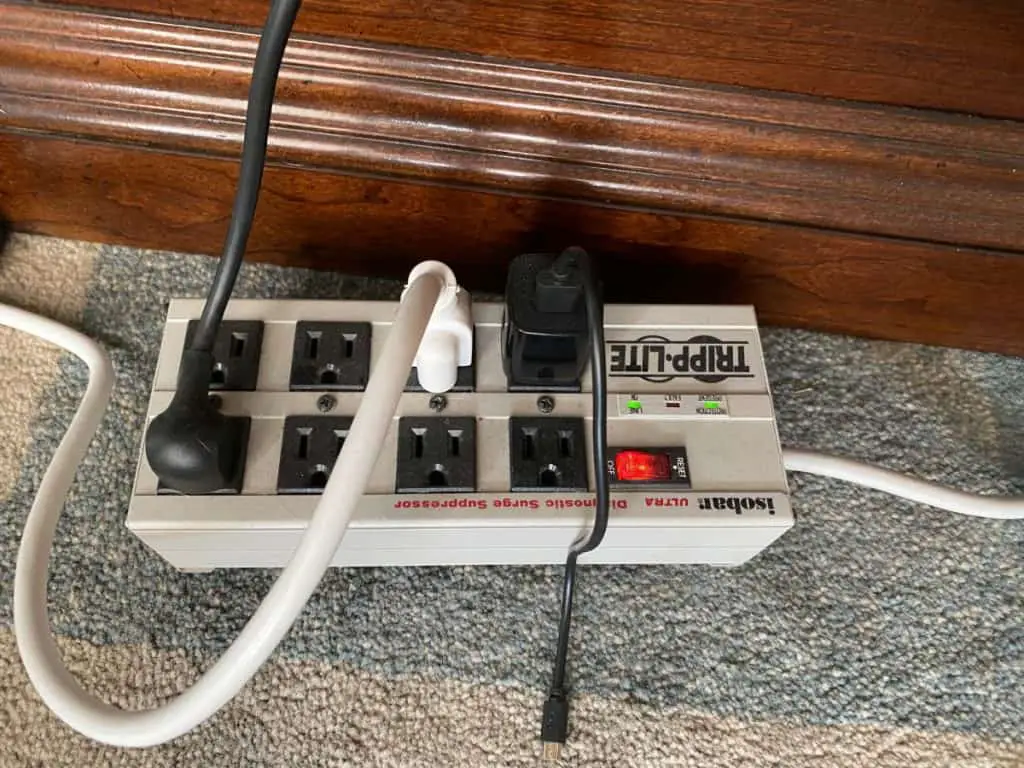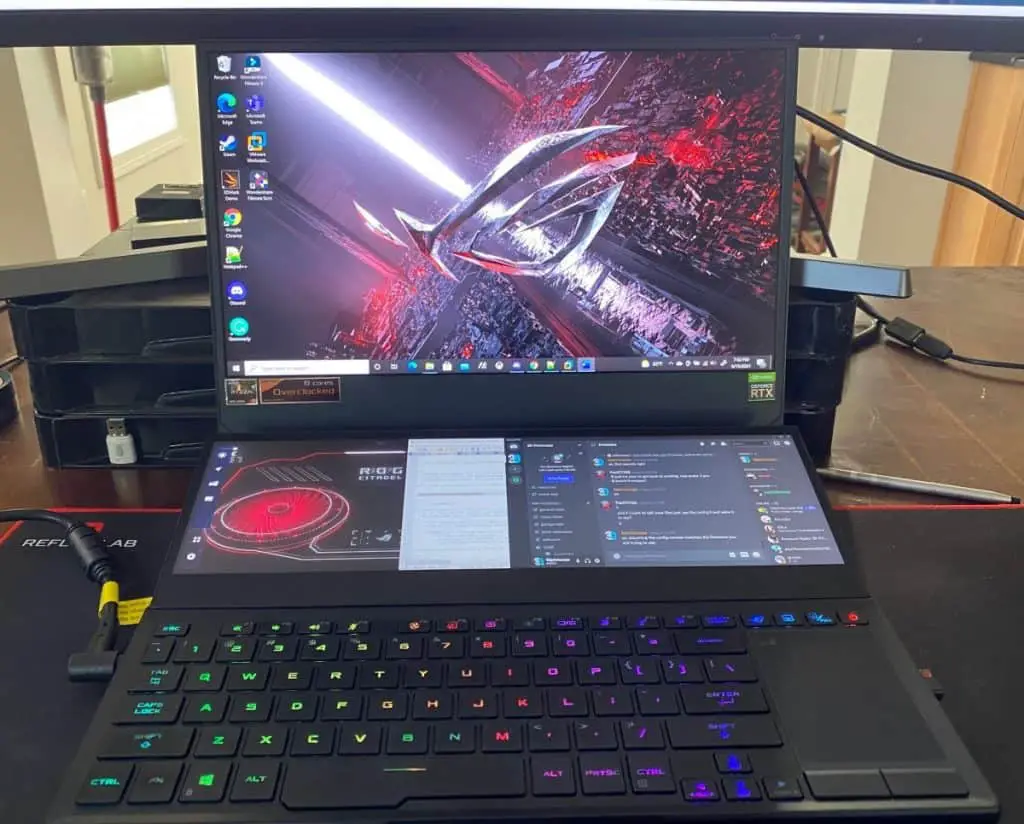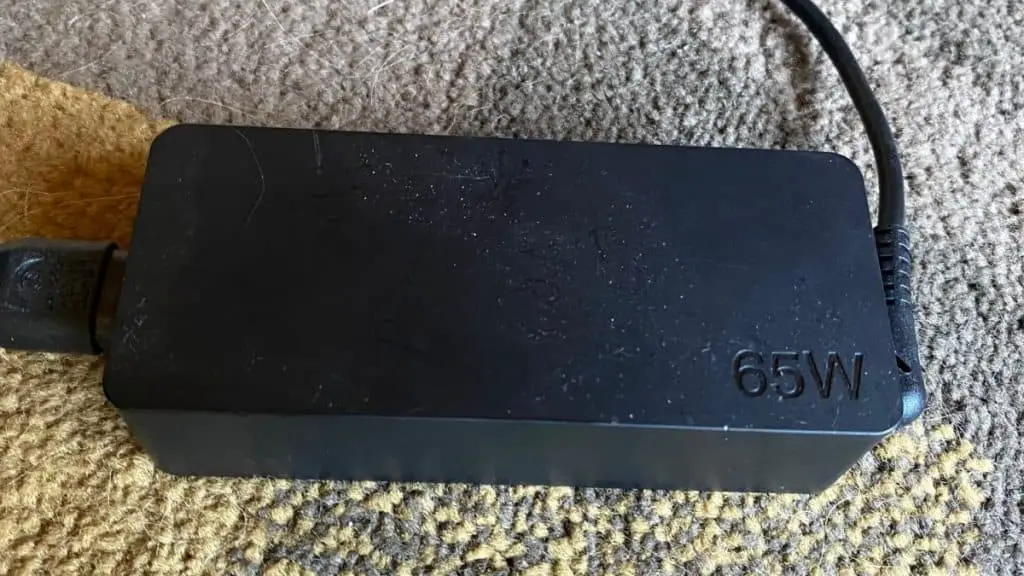Your laptop probably came with a long and bulky charger. While it may seem like these power cords come with a built-in surge protector, the reality is that most of them do not. So, if your laptop charger doesn’t come with a surge protector, is it necessary to get a surge protector for your laptop?
Laptops need surge protectors because they are not designed to resist intense power surges. They have numerous voltage-sensitive parts that a voltage spike could easily damage. Although your laptop may survive for some time, the best way to protect it is to connect it to a surge protector.
Having a non-functional laptop due to a power surge is unimaginable. Surge protectors are affordable and can spare you from unplanned expenditure in replacing a damaged computer. Take a look at why you need a surge protector, how it works, and what could happen if your laptop does not have one.

Why Laptops Need a Surge Protector
Power lines usually provide a stable supply, and any variations are not likely to damage your laptop. However, external elements such as a lightning strike, loose wiring, or a power grid malfunction can create an intense surge that exceeds the capacity of a vulnerable line.
You may also need to protect your laptop if your residential area has an unstable current. For example, if your apartment is one where you use multiple electronics in one place, the power supply could be unstable.
Laptop chargers generally do not have built-in surge protectors, but you can buy one specifically designed for your laptop model. A UPS and a dedicated surge protector will provide the best protection. They are equipped to detect and respond to power spikes that exceed the normal range.
However, a surge protector will still work if you do not have the finances to purchase a UPS. When traveling, you can buy a power strip with an inbuilt surge protector if you stay at a hotel room.
How Surge Protectors Work
A surge protector is like a protective wall guarding your laptop against excess power. It suppresses voltage spikes coming from the power supply and diverts the extra voltage to a ground wire inside the suppressor. During a power surge, this wall blocks the electric overflow from making contact with your laptop.
Protection from any surge protector is in specific amounts of joules. For example, for a 1000 joule rating, the protector can absorb different amounts of volt hits, adding up to 1000. It can take five hits of 200 volts, ten hits of 100 volts, or one hit of 1000 volts. The surge protector’s design does not affect the level of protection.
Unfortunately, it is sometimes challenging to determine the number of joules left in the protector. Therefore, it is advisable to get a protector with a signal light indicating whether your device is still functional or has outlived its purpose.
For a surge protector without an indicator, think of any significant power occurrences since you bought it. Think of a power outage due to a lightning strike or any time that your lights were flickering. It might be good to replace the surge protector if you have been using it for several years.
How To Choose a Surge Protector for Your Laptop
Buying a laptop will cost you anywhere from a few hundreds up to even several thousands of dollars. It is therefore critical to get optimal protection for your investment. Here are some tips on the boxes the best surge protector should tick.

1. UL Safety Rating
Underwriters Laboratories (UL) are independent safety specialists. This not-for-profit organization tests products rigorously and assigns a certification seal to the items they deem safe. The UL seal indicates that the product was tested by a trustworthy, independent assessor and meets specific quality standards.
Usually, surge protectors have a UL seal. Check for the mark indicating that the surge protector was appraised against ANSI/UL 1449, a more demanding testing standard. Although the symbol does not guarantee product perfection, it is proof of rigorous testing.
2. Higher Absorption Rating
The absorption rating is a number that indicates the energy absorption capacity of the surge protector and the estimated lifespan. It is a critical determinant of what to buy; the higher the number, the better the protection.
A 1000 joule rating is sufficient for a laptop, but a quality surge protector with a 600 joule rating can safely control electrical spikes. However, try to get the highest possible rating within your budget for maximum safety.
3. Low Clamping Voltage
Clamping voltage is the power required to activate the surge protector to start absorbing electricity. It is inaccurate to assume that the higher the clamping voltage, the better the protection. On the contrary, the lower, the better.
Prioritize low clamping voltage of around 400v or lower. Also, check the product details for response time. Response time is the duration between when the surge protector senses a voltage spike and when it starts clamping–the shorter the time, the better.
4. Number of Ports
Buy a surge protector with enough ports to handle all your computing needs. Do not assume that all surge protectors have six or eight ports. There are some with 12 outlets and are well-spaced to allow you to use all of them.
With many ports, you will not need to daisy chain your surge protectors, something that can compromise your laptop’s performance and safety.
5. Warranty
Manufacturers usually offer warranties for short periods, so you are safer picking a surge protector with an extended warranty. Some guarantees cover damages to connected devices if the protector fails within the warranty validity period.
Check what the warranty covers or does not cover and how to file a claim if needed.
How a Power Surge Can Affect Your Laptop
A power surge can occur unexpectedly, but they are more likely to happen during a storm. The damage is often minimal, but it can sometimes be significant. If your laptop does not have a surge protector, you can expect the following:
1. Damage to the Charger or Battery
Your laptop is probably always plugged in if you use it in place of a desktop. For your computer to operate correctly, the battery must be able to recharge and retain the charge when unplugged.
With time, voltage spikes can cause failure or permanent damage to the charger, the battery, or both and render them useless. The battery might take considerably longer to charge and discharge quicker. Use a power strip with a surge protector if you have to recharge your laptop during a power surge.

2. Laptop Will Not Power On
Your laptop’s motherboard might fail and not turn on if it receives excess electricity. In turn, your computer might overheat or not boot.
You might lose access to the files and information stored there, and you also may not be able to complete any tasks until you replace the motherboard, which can be quite costly.
3. A Sluggish Hard Drive
In addition to damaging the motherboard, a power surge can destroy the hard drive. Sometimes, the problem causes permanent data loss or continuous performance issues that make using the laptop a challenge.
The system could slow down significantly, powering up could take longer, apps might run slower, and some files might not open. The inconveniences might be minor or significant depending on what you need the laptop for.
Conclusion
A surge protector is an essential laptop accessory. Your computer is expensive, and a volt spike can destroy it instantly. You never have to worry about damage from sudden power failures if you have a surge protector for your laptop.
